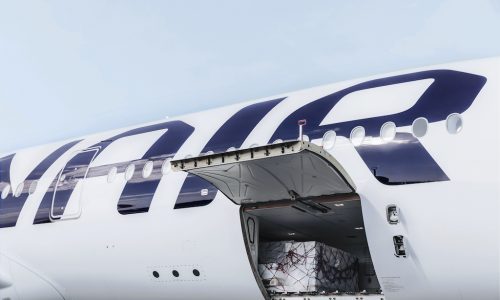- Fit for 55 (FF55) policies should support future industry investments in new aircraft technologies and SAFs – two key tools to decarbonise aviation by 2050.
- Unilateral and double pricing of CO2 under several market-based mechanisms is economically and ecologically counter-productive and could distort competition within the EU and globally.
- Sector’s Destination 2050 decarbonisation roadmap shows alignment with EU climate goals without the need for further cost increases.
- Carbon leakage and competitive distortion within and outside Europe will need to be mitigated.
The European Commission’s “Fit for 55” package includes several proposals which will significantly impact European airlines in the years to come, said Airlines for Europe (A4E), an association based in Brussels.
For aviation, future European policies are crucial to ensure investment in new fleet, Sustainable Aviation Fuels (SAFs), new technologies — such as electric and hydrogen aircraft, and to achieve more efficient air traffic management via an updated Single European Sky. Europe’s airlines have ambitious targets in line with the COP21 Paris Agreement.
The sector is committed to accelerating its emissions reductions to reach net zero CO2 emissions by 2050 for all flights within and departing Europe, and to significantly reduce emissions by 2030 as per the sector’s Destination 2050 roadmap. Aviation is responsible for around 3% of global emissions.
Relevant policies for aviation in Fit for 55 include: A SAF blending mandate under the ReFuel EU Aviation initiative; the review of the Energy Taxation Directive (ETD); the proposals on EU ETS and CORSIA; the review of the Renewable Energy Directive (RED) and the alternative fuels infrastructure Directive.
“The proposals unveiled today will have a transformative impact on the sector. We look forward to working with policy-makers to ensure airlines can deliver on our commitments, while at the same time making sure regulators also play their part. In the end we must keep air transport affordable and accessible to all citizens”, said Thomas Reynaert, Managing Director, A4E.
“We re-affirm our position, however, that climate policy regulation can be ecologically and economically counterproductive. Badly designed European taxes will not reduce emissions. By making flying more expensive, it may shift demand globally and reduce traffic locally. But it will not tackle the source of the emissions. We need to invest in solutions that offer real reductions in CO2 emissions per aircraft. Increasing costs reduces our capacity to make these investments whilst CO2 emissions are potentially shifted to other regions”, Reynaert added.
In this regard, unilateral and double pricing of CO2 under several market-based measures would be economically counterproductive. If airlines pay for their CO2 under the EU ETS, for instance, they should not have to pay for it again elsewhere. Inefficient policies leading to a disproportionate cost burden hamper aviation’s decarbonisation plans.
As one of the sectors hardest hit by the pandemic and with an essential role in kick-starting societal and economic recovery – future EU policies must guarantee and support the sector’s competitiveness. The Fit for 55 policies risk affecting this competitiveness and that of the entire aviation ecosystem, Europe’s tourism industry and the wider EU economy.
Carbon leakage will need to be mitigated through appropriate measures, such as uniform regulations, carbon border adjustment or designated finance mechanisms preserving competition neutrality.
Destination 2050 (D2050) showed that decarbonisation and an alignment of the aviation industry with the EU’s climate targets is possible without further significant cost increases on the sector. The European aviation sector’s pathway would guarantee that air transport can decarbonise without compromising its ability to continue delivering social and economic benefits globally.
Any further taxes on aviation must also take into account the overarching costs which are unique to airlines in Europe, and how these relate to decarbonisation efforts.
This includes, among others: ticket taxes, solidarity taxes, air traffic control charges, airport charges and security costs – the latter of which is paid for by the State in other sectors. These costs are unevenly carried by other modes of transport and should be better considered when designing future economic policies.

